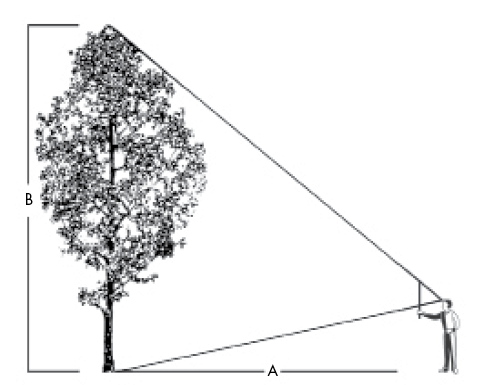4-H Forestry Project No. 2: Big Tree Contest
The American Forestry Association (AFA) began a Big Tree program in 1940. The September 1940 issue of American Forests magazine included a headline reading: “WANTED! The Location and Measurement of the Largest Specimen of the Following American Tree Species.” A list followed of 100 trees, from ash to walnut.
Five years later, the AFA published a list of 228 champion trees in American Forests. Of those first champions, only a few still have a title. The others have died, been destroyed, or been replaced after the discovery of larger specimens.
Over the years, the Big Tree program has enjoyed steady growth in size and scope. The Champion Trees National Register now contains 772 trees. This list is far from complete as more than 1,000 species are still eligible to be included.
Mississippi has a similar program called Champion Big Trees of Mississippi. The program’s purpose is to locate, measure, and recognize the largest individual tree of each species in Mississippi.
Measurement and Selection
Champion Big Trees are determined by the points awarded in three different measurements: circumference, height, and crown spread.
- Circumference is the distance around the tree measured at a point 4.5 feet above the ground. One point is given for each inch in circumference.
- Height is the distance from the base of the tree to the topmost twig of the tree. One point is given for each foot (12 inches) in height.
- Crown spread is the average distance that the crown spreads away from the main trunk of the tree. One-fourth of a point is given for each foot in average crown spread. (It takes 4 feet of crown spread to get one point.)
For example, let’s say you have just measured a post oak that has these measurements: circumference: 144 inches; height: 70 feet; and average crown spread: 80 feet. You should score the tree this way:
circumference: 144 inches x 1 point = 144 points
height: 70 feet x 1 point = 70 points
average crown spread: 80 feet x ¼ point = 20 points
total = 234 points
The Big Tree entry with the highest total points will be declared the champion of its species in the state and will be cited in the Mississippi Forestry Commission’s official listing of champion trees. Co-champions will be listed when entries are very close in total points. Any Mississippi champions that score higher total points than those listed in the Champion Trees National Register will be sent to AFA for consideration.
4-H’ers and Big Trees
As a 4-H member involved in a forestry project, you can have fun and get recognition at the same time by locating and nominating a Champion Big Tree. It is not easy finding trees bigger than the champions already listed; however, if you do find a new champion, you will receive a certificate recognizing you as the locator and nominator of the largest tree of a certain species in Mississippi.
You might think it’s impossible to find a tree larger than the current champion; however, new champions replace old champion trees every year. Someone is finding them, and it might as well be you. Some champions have even been located in the middle of town in someone’s front yard!
Another way to find a champion tree is to locate a tree of a species that has not yet been nominated and listed. Some species grown in Mississippi are not currently represented on the list of champions. So any tree you find of a species not listed can be a new champion, no matter what size it is.
Another interesting way to become involved in the Big Tree program is by starting a county program. We already have national and state programs, and a county program is a logical extension. You and your club may be able to get a program started in your own county. With a new county program, plenty of county champions can be found, and more 4-H members can become involved.
Project References
- American Forestry Association’s Champion Trees National Register
- Mississippi Forestry Commission Champion Big Trees of Mississippi
- Extension Publication 146 Know Your Trees
- Extension Publication 1473 4-H Forestry Project No. 7: Measuring Standing Sawtimber
Project Materials
- A piece of non-stretch string about 25 feet in length
- A tape measure
- A straight stick at least as long as your arm. (Note: A wooden yardstick works well.)
- Four sharp sticks to use as stakes.
Sources of Help and Information
You may be able to get a local forestry, agricultural, or natural resource agent to help you locate big trees. They may know of a very large tree that is worth measuring. They may even know of a tree in your area of a species not yet represented on the list. They may also be able to help you locate current champion trees that may be in your county.
- County MSU Extension agents
- Area forester, Mississippi Forestry Commission
- District conservationist, Natural Resources Conservation Service, U.S. Department of Agriculture
- Project forester or district ranger, U.S. Forest Service, U.S. Department of Agriculture
- Industry foresters who work for forest industry companies
- Self-employed consulting foresters
- Park managers, Mississippi Department of Wildlife, Fisheries, and Parks
Instructions
- Locate a tree that you think may be of champion size.
- Find the owner’s name. Contact the owner and explain what you want to do. Ask permission to measure the tree.
- Measure from the base of the tree to a point 4.5 feet above the ground. This is the exact location of the trunk of the tree where circumference (distance around) should be measured. If your tape measure will not reach around the tree, use your non-stretch string. Then use your tape to measure the amount of string it takes to reach around the tree.
- You can get a fairly close estimate of height with a straight stick. Hold the stick straight up and down at arm’s length in front of you. The length of the stick above your hand must be the same as the distance from your hand to your eye (see illustration). You can get this distance fairly accurately by placing one end of the stick just under your eye, stretching your arm, and then grasping the stick at the other end. By keeping your hand at that point, the length of the stick above your hand will be the same as the distance from your hand to your eye. Now, hold the stick upright at arm’s length, and, without moving anything but your eyes, look up at the top of the stick. Move slowly away from the tree until the top of the stick is lined up with the top of the tree. Remember to keep the base of the tree in line with the top of your hand. Now, make a mark on the ground where you are standing. Measure the distance from the mark to the base of the tree. You should now have an estimate of the tree’s height.
- For the crown spread, you will need two measurements to get an average. Step back and take a look at the tree from a distance. The crown will probably look wider on one side than another. Put a stake in the ground on each side of the tree, directly under the tips of the widest spreading branches. Do the same thing on both sides of the narrow part of the crown (see illustration). You may want to step back and look from a distance to see if your stakes are lined up with the very outer edge of the crown of the tree. Measure the distance between stakes. Add the narrow distance to the wide distance and divide by two to get the average crown spread.
- Using your measurements, total up the number of points your tree scores.
- Compare your tree’s score to the same species of champion tree’s score in Champion Big Trees of Mississippi.
- If your tree’s score is close to or more than the current champion’s score, contact your Mississippi Forestry Commission office. The area forester can check your figures and provide you with a nomination form.
- Have your local Mississippi Forestry Commission county forester and your adult 4-H leader check and sign your record sheet. Include the record sheet in your adult 4-H member’s record. Save the project sheet and other materials for the future.


Open the PDF file above for the 4-H Forestry Project No. 2 record form.
Publication 1228 (POD-05-22)
Revised by Brady Self, PhD, Associate Extension Professor, Forestry, from an earlier edition by Thomas A. Monaghan, Extension Professor (retired), Forestry.
The Mississippi State University Extension Service is working to ensure all web content is accessible to all users. If you need assistance accessing any of our content, please email the webteam or call 662-325-2262.



